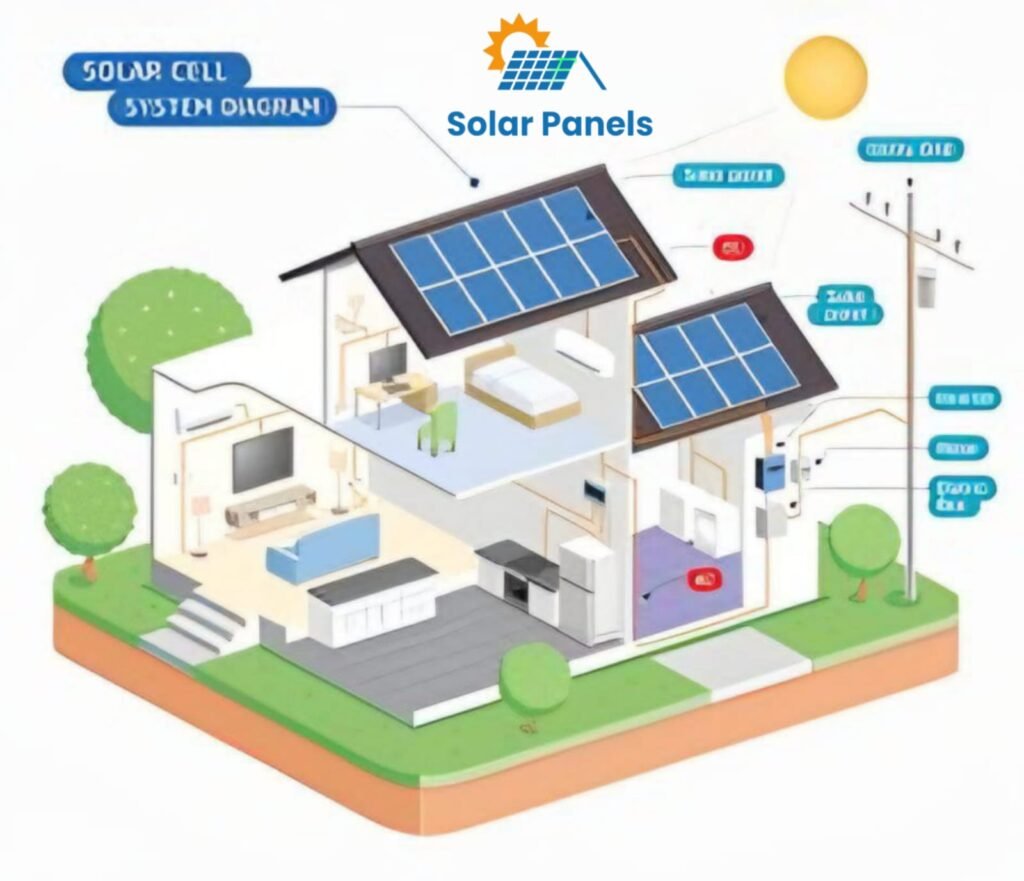
In today’s rapidly evolving energy landscape, hybrid solar systems are emerging as a pivotal solution for sustainable energy needs. These systems integrate solar power with other energy sources, ensuring a consistent and reliable energy supply. In this comprehensive guide, we delve into the intricacies of Hybrid Solar System, exploring their components, benefits, and the reasons they are becoming a preferred choice for both residential and commercial applications.

What is a Hybrid Solar System?
A Hybrid Solar System combines the benefits of both on-grid and off-grid systems. It incorporates solar panels, a battery storage system, and a connection to the local utility grid. This combination allows for greater flexibility and reliability, ensuring that energy is available even when the sun is not shining or during peak demand periods.
Key Components of a Hybrid Solar System
- Solar Panels: The primary source of energy, converting sunlight into electricity.
- Inverter: Converts the direct current (DC) the solar panels generate into alternating current (AC) for use in homes and businesses.
- Battery Storage: Stores excess energy produced during the day for use during the night or cloudy days.
- Grid Connection: Allows for the import of electricity from the utility grid when solar and battery power are insufficient.
- Energy Management System: Optimizes the use of solar power, battery storage, and grid electricity to maximize efficiency and cost savings.
Benefits of a Hybrid Solar System
Energy Independence and Reliability
One of the most significant advantages of a hybrid solar system is its ability to provide energy independence. By storing excess solar energy in batteries, users can reduce their reliance on the utility grid. This is particularly beneficial during power outages or in areas with unstable grid supply.
Cost Savings
Hybrid solar systems can lead to substantial cost savings on electricity bills. Using stored solar energy during peak hours, when electricity rates are highest, users can minimize their grid electricity consumption. Additionally, many regions offer incentives and rebates for solar installations, further reducing the overall cost.
Environmental Impact
Utilizing a hybrid solar system reduces the dependence on fossil fuels, leading to a significant reduction in carbon footprint. By generating clean, renewable energy, these systems contribute to a sustainable future and help combat climate change.
Enhanced Grid Stability
Hybrid systems can provide ancillary services to the grid, such as voltage regulation and frequency stabilization. By smoothing out fluctuations in power supply and demand, they enhance the overall stability and reliability of the grid.
Types of Hybrid Solar Systems
DC-Coupled Systems
In a DC-coupled system, the solar panels and battery storage are connected on the direct current (DC) side of the inverter. This efficient configuration allows for seamless integration of solar energy and battery storage.
AC-Coupled Systems
AC-coupled systems connect the solar panels and battery storage on the alternating current (AC) side of the inverter. While slightly less efficient than DC-coupled systems, AC-coupled systems offer greater flexibility and are easier to retrofit into existing solar installations.
Off-Grid Hybrid Systems
These systems are designed for complete energy independence, with no connection to the utility grid. They are ideal for remote locations or areas where grid access is unreliable or unavailable.
Conclusion
A hybrid solar system offers a versatile and sustainable solution for modern energy needs. By combining solar power with battery storage and grid connectivity, these systems provide reliable, cost-effective, and environmentally friendly energy. As technology continues to advance, hybrid solar systems will play an increasingly vital role in our transition to a cleaner and more resilient energy future.
By understanding the components, benefits, and applications of hybrid solar systems, we can make informed decisions that not only meet our energy needs but also contribute to a sustainable and prosperous world.
